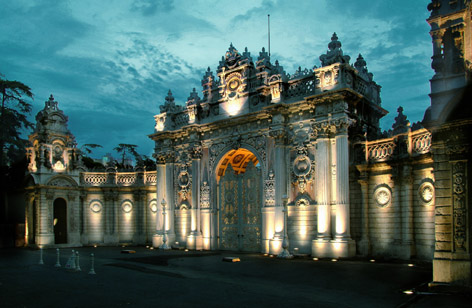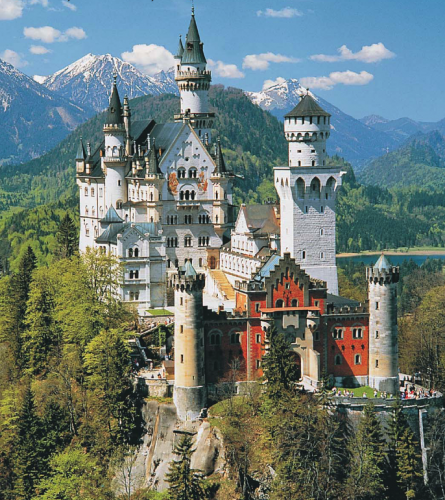Seoul is bustling with creative opportunities for architecture firms all over the world. In the up-and-coming Yongsan International Business District (area north of Han River across from Gangnam-gu, currently a US Military base, but the base is planned to be moved down to Pyeongtaek in 2013), several amazing structures have been conceived, pitched, and are in the process of becoming reality.
Click the links to learn more about each of the buildings you see. My favorite is the Landmark Tower, proposed to be 620 meters tall! It reminds me of the Ivory Tower from Neverending Story! You can read my thoughts on architecture at the end after scrolling through the pictures.
 |
| http://www.ecofriend.com/solar-oriented-cross-towers-design-makes-commercial-centre-seoul.html |
Architecture is sexy.
Admittedly, one of my favorite magazines is AD and like a teenager with Playboy, I mostly just look at the pictures. Design is a field full of ingenuity and aesthetics. The history of Architecture has a dynamic tapestry.
Like I said, "architecture is sexy."
ACT I: The Nomads
Architecture formed from our primal drives toward survival. Maslow would include it on the foundation of our heirarchy of needs among our most basic of needs: food, water, and shelter. From the dawn of man, we've sought shelter. As our brains grew, so grew our desire and ability to manipulate and create better shelters. Eventually, man crawled out of the caves like Nietzsche's Zarathustra ready to cross the evolutionary bridge towards übermenschlich man. As nomads, humanity constructed portable shelters like the Mongolian Ger in central Asia and the Tee Pees of the Plains Indians of North America (pictured below).
ACT II: The Settlers
Rousseau desribed the transition of nascent man to civilized man as the act of one coming out of the woods, leaving behind the role of noble savage, putting up a fence and declaring "this is mine." Thus civilization was born. People began farming and staying in the same place. Human nature turned from being in accord with the earth and the changing of seasons to taming nature itself. Nomadism was still in our veins and so many built summer settlements and winter settlements and traveled back and forth according to the season and wild game. Some people groups, like vikings, spent time raiding others and yet still they built more permanent homes than what were previously used. Vikings build long houses across northern Europe to help sustain them as they explored the waterways. Native American of the northeastern woodlands also did this. As time passed, these settlements became more and more permanent across the land. People groups in temperate climates build grand cities and dealt with problems like population control. We see this in archeological evidence of the great ancient civilizations of Egypt and Anatolia. They learned that they must be careful not to over produce, lest the environment become unable to sustain them. This is probably what happened to the Inca before they returned to the jungles from whence they came. Also, the influx of disease comes with great populations centers. we learned this in medieval europe as plagues ravished the populations there. However, architecture withstood every epidemic and pestilence. In the end, stone remains.
Before leaping into the age of Germanic Castles and Gothic Cathedrals, we must pay homage to the stone masons who figured out how to reinforce and stack stone so that it would reach the sky. if you have time, watch the miniseries "Pillars of the Earth." It tells the story of a medieval stone mason working on a cathedral over his lifetime. We don't realize it when we see these marvels of ingenuity, but many of the great buildings we see in famous cities in Europe took many generations of lives to build. The Duomo in Milan took nearly 500 years to complete. Many of the workers passed the skills and knowledge on from father to son as master and apprentice. There are whole families who worked on the project continuously throughout their lives from one generation to the next!
If we think simply, the arch, dome, and vault are merely variants of the same design. An arch is first. If you make a row of arches close together, you get a vaulted ceiling. If you take an arch and spin it around on a single point, you get a dome. Each design distributes the weight from above to the blocks below to make it self supporting. However, you have have a raised arch, you must butress the sides because the weight would push the sides out when it is raised on a single wall. In the example above of the Duomo in Milan, you can see grande examples of multiple layers of flying butresses built into the design. This is how they built it so tall.
The design for the gothic cathedrals are terrificly advanced. Truly a remarkable work of genius for the medieval architects. It's no wonder the place is beheld in awe as a mark of holy and divine grace shared with man. Imagine being a poor farmer from the country-side coming into town for the first time for market and seeing this magestic site. Truly awe inspiring!
ACT IV: Castles and Palaces
Look at these other wonders of architecture!
 |
| Dolmabahce Palace, Istanbul |
 |
Peterhof - Summer Palace of Peter the Great
|
 |
| Germanic Castles |
I sometimes dream of having a family estate with servants quarters, stables, and vast grounds for gardens, woodlands, an ancient gated entrance with long carriageway leading to the grand house. And even an old stone wall surrounding the land with old gatehouses leading to old roads to nearby towns in surrounding directions. I've actually drawn plans and blueprints for this; complete with ruins, labrynth, and hidden passages.
I loved the new remake of The Wolfman because I love Talbot manor. The old estate is exactly the type of thing I envisage in my daydreams of a heritage home in the old world. This is worth a separate blog post if there is interest.
Are we are on our way to the fantastic future of ecumenopolis like Coruscant?
 |
| Pinnacle@Duxton public housing in Singapore |
ACT V: Enter Modernity
Back to the present. Now, as cities become metropoli and even megametropoli, we continue to shape and mold our surroundings to fit our growing needs. Cities like Tokyo and Seoul are small and so are ever crawling upward into the skies to fulfill the need for space for their copious populations. Watch this video http://www.bbc.co.uk/news/world-20526219 to see how architects are making use of the skies in Singapore.
Are we are on our way to the fantastic future of ecumenopolis like Coruscant?
Here are the tallest buildings in the world so far..... Click here for a site with a great chart of the best as of 2013! Be sure to click next page on the right to see others. I missed this the first time I looked!
I plan to see several of these while traveling around the Eastern world this year!
Humanity's potential for creativity is truly incredible!
★ Architecture is sexy and so can you! ★







